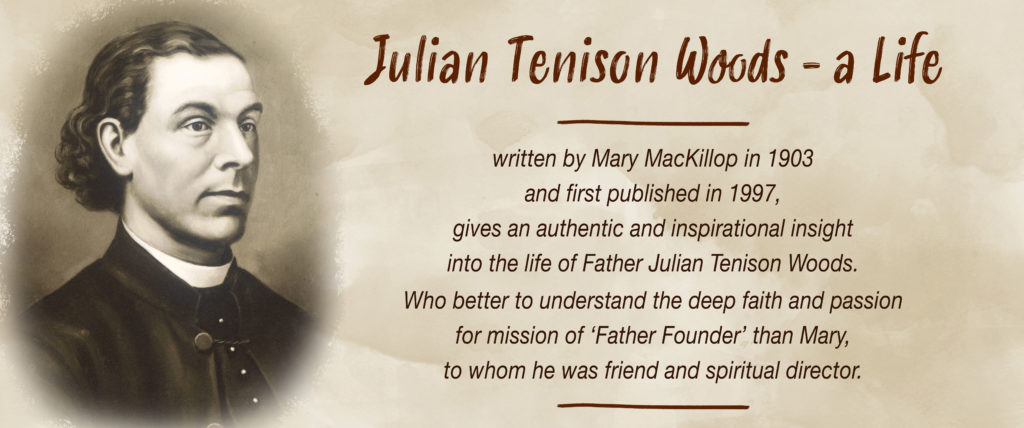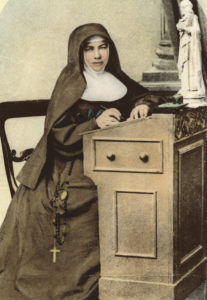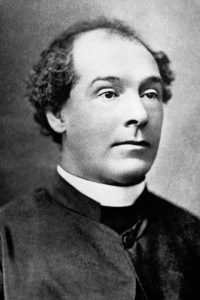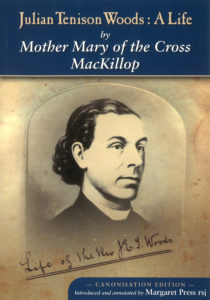
Chapters 2nd & 3rd
He had become acquainted with the Rev. Francis Oakley, who had charge of the Catholic Chapel and Schools at Islington, London… Under Canon Oakley, he took partial charge of one of the schools in the suburbs, for the children of the better classes… He remained in this position about a year and a half…

Canon Oakley introduced Julian to the Honorable and Reverend Geo. Spencer, who at the time was making a sensation as Father Ignatius, the Passionist Missionary… What an attractive figure, what a charming example he must have appeared to the young teacher, then eighteen, with his yearnings for a higher spiritual life – how he must have longed to follow such a leader… It seemed a most natural conclusion when Julian Woods left Canon Oakley’s school, and entered the Passionist Order, giving himself completely to its teachings and its practices, feeling satisfied that he had found his goal.
But it was not to be… He was not long with the Passionists when his health broke down; and after being removed from one house to another for change, without any permanent benefit, it was considered by those who had a right to judge that the austerities of the Order were greater than his constitution could bear…
Leaving his Order was a bitter disappointment to the fervent novice, but he cherished a firm hope that his departure was only a temporary one… he turned to the busy world, though he could not stifle his deep regret at leaving the peaceful Retreat – a lifelong regret from which he was never afterwards separated.
Change of climate was considered the best remedy for Julian’s ill-health. Accordingly, after remaining a short time in London, where he enjoyed the friendship of Father Faber, he was sent to France, and soon became one of the professors at the Toulon College for Naval Cadets. It was here that his taste for geology and natural science developed itself…

He made the acquaintance of the Marist Fathers… Mr Woods was not quite twenty-one when he entered the Marist Novitiate at Mont Bel… he was doomed to another disappointment; or rather, we may say he was intended for a different work…
Mr Woods became acquainted with Dr Willson, at that time on a visit to Europe…the good Bishop thought the time had come to make a venture in the cause he had so much at heart, the forming of a seminary as the foundation of a proper system of Catholic Education in the diocese [of the Island of Tasmania]… now that he must again withdraw from a religious life he had some conversation with the Bishop on the subject. The result was that, after spending a few months in his brother’s house in London, he bade farewell to Europe and sailed with Dr Willson in the ‘Berenicia’ on 15 October 1854 for Hobarton.
His brother, Mr J.D. Woods, had gone out to Australia two years earlier and was settled in Adelaide. Another brother, Edward, was preparing to go to Port Philip where the great goldfields had attracted a large population… But none of these things was the magnet which drew Julian Woods to the Southern Hemisphere.
The wide field of Missionary enterprise spread out before his view including schools, where along with the daily study of all that is best in secular education, children should be trained to know their religion thoroughly, and practise it properly…

This extract is taken from:
Chapters 2nd and 3rd of Julian Tenison Woods: A Life has been used with the kind permission of the Trustees of the Sisters of Saint Joseph 1997 and the publishers, St Paul’s Publications.
If you would like to read the full text, including an informative Introduction, footnotes and an index, this book is available online and from some Mary MacKillop Centres.
Carmel Jones rsj
